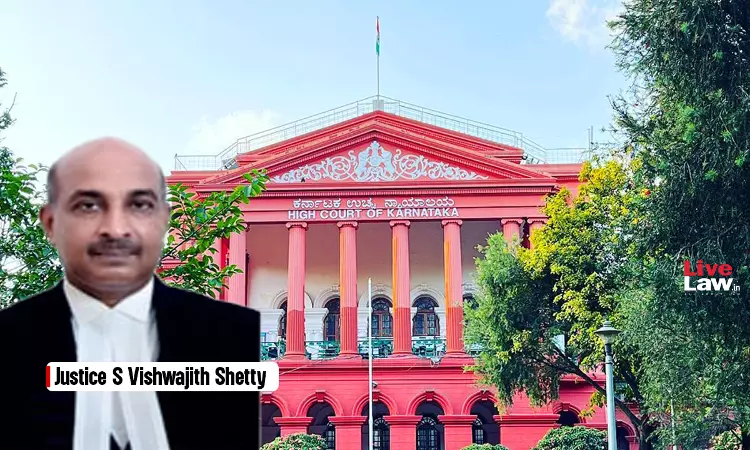O. 18 Rule 1, 3 CPC | Right To First Lead Evidence With Plaintiff Even If Burden Of Proving Some Issues On Defendant: Karnataka High Court
Mustafa Plumber
5 Nov 2025 10:00 AM IST

The Karnataka High Court has said that in a suit where there are multiple issues framed, the right to lead the evidence is always on the plaintiff, even if the burden of proving some of the issues is on the defendant.
Further, in a case where the plaintiff intends to reserve his right to lead evidence in rebuttal after the defendant leads his evidence, the plaintiff can always make such a request to the court; however it is for the defendant to decide whether he wants to begin with his evidence.
Justice S Vishwajith Shetty said thus while allowing a petition filed by one Deenanath and set aside the order of the trial court.
"From a plain reading of Rule 1 and 3 of Order XVIII it is clear that in a case which falls under Rule 1 normally it is for the plaintiff to lead his evidence first. It also enables defendant to exercise his right subject to the contingency mentioned in the Rule. In a case where plaintiff intends to reserve his right to lead evidence in rebuttal after the defendant leads his evidence, he can always make such a request to the Court, but then it is for the defendant to decide whether he wants to begin with the evidence. When there are several issues in a case, in respect to the issue where the burden is on the defendant to prove, the plaintiff can exercise the option as provided under Rule 1. However, in respect to the other issues the right to lead the evidence is always on the plaintiff".
The trial court had allowed a memo filed by respondent-plaintiffs (Chandrahas) stating that at present they have no evidence to lead and reserving their right to lead rebuttal evidence, the petitioner-defendant may be asked to lead evidence. The memo by Chandrahas was filed in the suit filed by him seeking partition and separate possession of a property.
Deenanath, contended that the burden to prove issue Nos.1 and 3 lies on the respondent-plaintiffs and the burden on the petitioner-defendant is only to prove issue No.2.
He argued, that the plaintiffs ought to have led their evidence on issue No.1 and issue No. 3 and it is only in respect of issue No.2 the plaintiffs could have sought permission of the trial Court to lead rebuttal evidence.
It was argued that the trial Court failed to appreciate this aspect of the matter and has erred in granting the prayer made in the memo by the plaintiffs.
The respondents submitted that the court has a discretion to call upon any of the parties to lead evidence depending upon the facts and circumstances of the case and the issues framed by the Court.
The bench referred to Order XVIII CPC which provides for hearing of the suit and examination of witnesses.
Rule 1 states that plaintiff has the right to begin unless the defendant admits the facts alleged by the plaintiff and contends that either on law or on some additional facts alleged by the defendant, the plaintiff is not entitled to any part of the relief which he seeks. In such a case the defendant has the right to begin to examination.
Rule 3 states that where there are several issues, the burden of proving some of which lies on the other party, the party beginning may, at his option, either produce his evidence on those issues or reserve it by way of answer to the evidence produced by the other party.
It states that in the latter case the party beginning may produce evidence on those issues after the other party has produced all his evidence, and the other party may then reply specially on the evidence so produced by the party beginning; however the party beginning will then be entitled to reply generally on the whole case.
Following which the court said “A reading of Order XVIII Rule 1 would go to show that the said Rule recognizes that ordinarily it is the plaintiff who has a right to begin by leading his evidence and the only exception would be where the defendant admits the facts alleged by the plaintiff and contends that either in point of law or on some additional facts alleged by the defendant, that the plaintiff is not entitled to any part of the relief which he seeks. In such a case, the defendant has the right to begin.”
The court noted that in the present case, except issue No.2 the burden to prove other issues, is on the plaintiffs. The high court referred to decision of the Bombay High Court in HAGIRATH SHANKAR SOMANI AND ANR. V. RAMESHCHANDRA DAULAL SONI & ANR (2007) which held that there is nothing under Rule 1 Order XVIII conferring any power on the Court to direct defendant to adduce evidence first in the suit if the defendant himself has not claimed such right in view of the contingencies mentioned in Rule 1.
Setting aside the trial court order the high court directed that the plaintiffs shall begin their evidence on all issues except issue No.2 and in the event plaintiffs make a request to lead rebuttal evidence on issue No.2 after the defendant leads evidence on the same, the trial Court shall consider it.
Advocate K. RAVISHANKAR, for Petitioner.
Advocate SANDESH SHETTY T, FOR R-1 TO R-4.
Citation No: 2025 LiveLaw (Kar) 371
Case Title: DEENANATH AND CHANDRAHAS & Others
Case No: WRIT PETITION NO. 796 OF 2022


